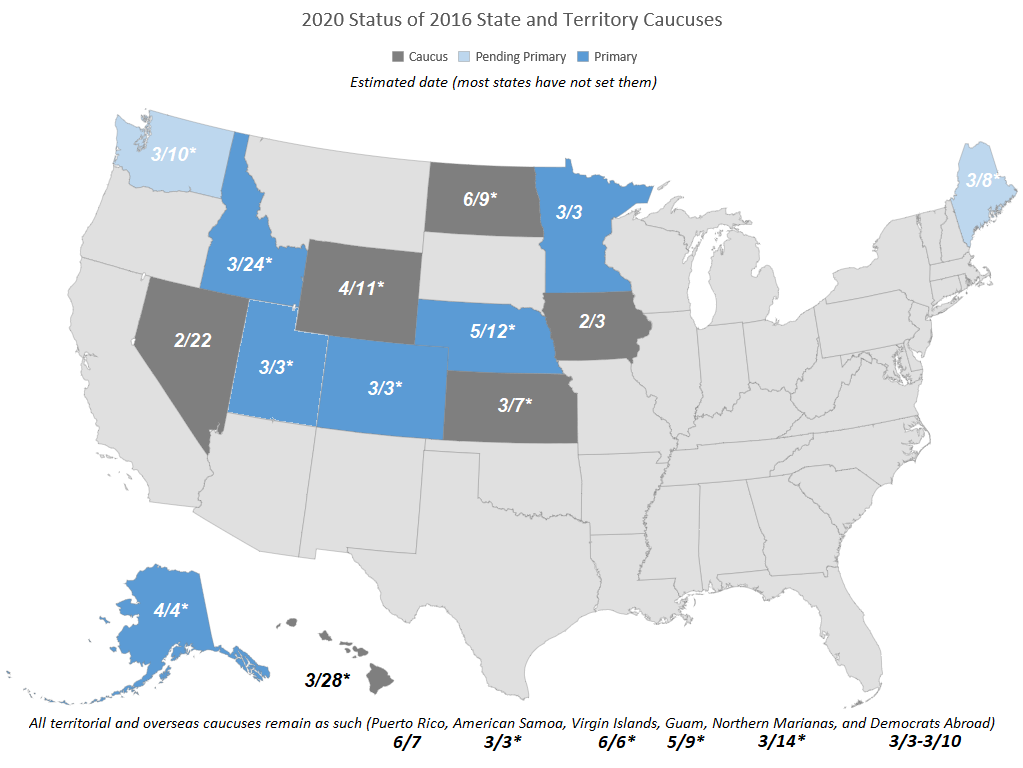As we race towards 2020, state governments and parties have been changing their calendars. But some have gone a step further, switching from caucuses to primaries. The 2016 cycle saw a total of twenty states and territories nominate in the former method, and it gave a bit of a lift to one candidate who is facing this party’s voters yet again.
Bernie Sanders performed far more strongly in caucus states than in traditional primary ones, winning 387 delegates out of the 634 available from the 2016 caucuses. The difference in performance between the two styles of contest can be found in Washington’s results.
Sanders absolutely dominated the 3/26 state caucus, earning 72.72% of the legislative district delegates. Two months later, in the non-binding primary election, Hillary Clinton won the state by 5%, 420,461 votes to 382,293. Washington Democrats will decide on April 7th if they want to award delegates by caucus again or take advantage of the state’s move-up date for the Presidential primary.
Washington isn’t the only potential change on the map this year.

Nebraska, Minnesota, Colorado, Utah and Idaho have already restored their Presidential primaries. Maine passed legislation establishing a primary in 2016, but due to a legal quirk, it expired. The current Democratic trifecta in Augusta is trying to re-establish the primary date, with the cost of the operation being the biggest obstacle. Assuming they go for it and Washington follows through on it’s eyed change, only seven states would hold caucuses in 2020, joining the territories and Democrats Abroad. Fewer than 10% of all delegates available would be awarded through this method.
You might think that Bernie Sanders will face a tougher time winning nomination without caucuses, but that would ignore the size of the current field (over a dozen challengers versus a one-on-one fight in 2016) and the fact that he earned tens of millions of votes in primaries in 2016. The larger the crowd, the smaller the percentage you need to earn a delegate count advantage, and he’s maintained a loyal following even as the landscape has changed. A change in the rules state by state isn’t going to help or hurt him any more than it would the baker’s dozen of opponents he will face.
The few remaining caucuses will still command attention early on. Iowa and Nevada are two of the big four tests for this massive field, one that could assist or maim campaigns as they try to fight on through at least Super Tuesday- a state caucus-free one for the first time since I’ve been alive, and I’m no spring chicken.
Update 4/1/2019- the Alaska Democrats released their delegate allocation plan over the weekend and have opted for a four-hour, nine-location in-person primary to award delegates, with a traditional caucus to select those delegates. The primary will have electronic and by-mail participation options, reducing the total number of potential caucus states to as few as six if Washington and Maine commit to a flip.